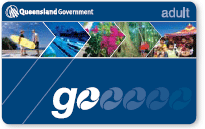Queensland Rail will be offering south-east Queensland commuters free wireless access to the internet from early 2010, according to the Minister for Transport, Rachel Nolan. This access will use spare capacity on the infrastructure used to transmit real-time video footage from surveillance cameras to QR’s control room at Central Station.
One thing from that story that caught my attention was this:
She (Rachel Nolan) said people living near train lines or stations would not be able to tap into the free internet service because it would be “firewalled”.
That would have to be one pretty intelligent firewall! Here are some actual possibilities to guard against free-loaders. One not so attractive way to do it would be to set a limit on daily downloads. The theory is that there’s only so much you could download on the longest possible trip on the QR network in south-east Queensland (say, Gold Coast to Nambour, or something like that). The other more attractive solution, in my opinion, would be to tie usage to go cards. Your internet session starts when you swipe on at the beginning of your journey, and it finishes when you swipe off. There’d be some kind of web-based login procedure like you get at hotels and elsewhere, where you enter your go card number to gain access; or regular users could have the option of registering the MAC address of their wireless card with QR/Translink to skip the login procedure. Given that it still takes ages for a credit card top up to find its way onto my go card, I don’t hold out much hope for QR/Translink being able to implement this particular solution within the already very optimistic time frame of early 2010. But I do think it’s a reasonable long term solution. It might even help Translink in their quest to move more commuters over to the go card from paper tickets.

